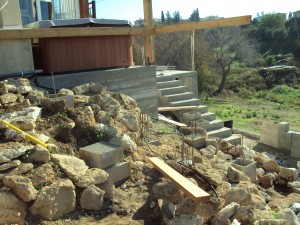I’ve trolled the internet for days trying to find working instructions for getting a PC to recognise the MK808, installing the correct drivers and finally rooting the MK808.
All of the instructions I have found so far miss out some very important steps.
First of all, download the drivers and unzip to a location you can remember (The drivers I used came with the Rockchip Batch Tool 1.5, and they worked for me). Download and install moborobo (moborobo also includes drivers and installs them, but you can’t connect with moborobo in the first place if you haven’t already installed the Rockchip driver). Download TPSparkyRoot and unzip to a location you can remember. Download and install ADB.
Right, having all the downloads in place, you need to get your MK808 connected to your computer and recognised.
Access the Developer option in the MK808’s Settings, and turn on USB debugging.
Disconnect the MK808 USB cable from the power supply, and, using the supplied USB cable, plug the mini-USB end into the OTG port, and get ready to plug the other end into your PC. Stick a paper clip into the reset button hole, and, as you press the reset button, plug the USB cable into your PC. (Fiddly I know, but it has to be done)
This is the only way that your PC will recognise the MK808, and it will prompt you for driver installation. This will fail as Win7 goes to Windows Update for drivers. Cancel all that and go and find the device in Device Manager and install the driver manually. (If you don’t know how to do that then forget about rooting the MK808 and go and buy a satellite system).
Now there will be a device called RK30 which will not be mounted as a drive but will show up as an unidentified device or something. Eject the device, power down the MK808 using the power button on your remote and reboot your PC.
Reconnect the MK808 to your PC using the same connection. The PC will not recognise it, but the MK808 should boot up to the Android desktop.
Run Moborobo. It will not recognise the MK808.
On the MK808’s Settings dialog, go to the USB option and check the Connect to PC option. Moborobo will find the MK808 and start installing another driver. Once complete, Moborobo will give an error message about the device model. Don’t worry about that, it’s installed the driver as required.
Now run TPSparkyRoot.bat
It will immediately reboot the MK808, with a message to press any key to continue.
DO NOT PRESS any key! Wait for the MK808 to boot to the Desktop, then go back into the MK808’s Settings dialog, go to the USB option, and re-check the Connect to PC option. (you have to do this at each reboot, as it’s forgotten at shutdown)
Now you can press any key.
TPSparkyRoot.bat will reboot the MK808 3 times. It is also supposed to install superSU and a couple of others as well but it was written for another device so these installations fail, however the rooting bit works and you can install those things from Google Play anyway once you’re rooted.
Good Luck.
